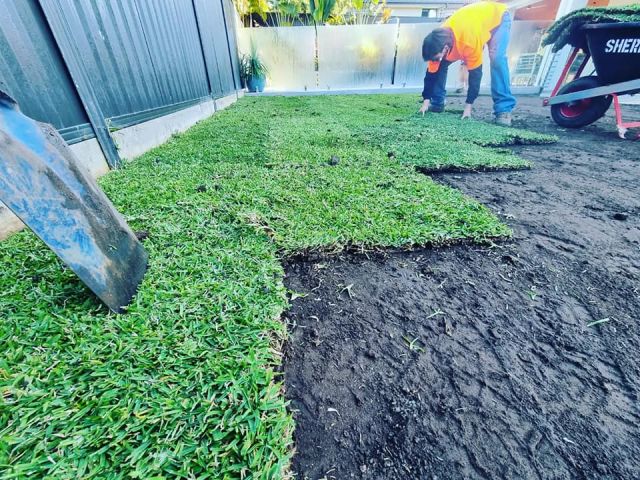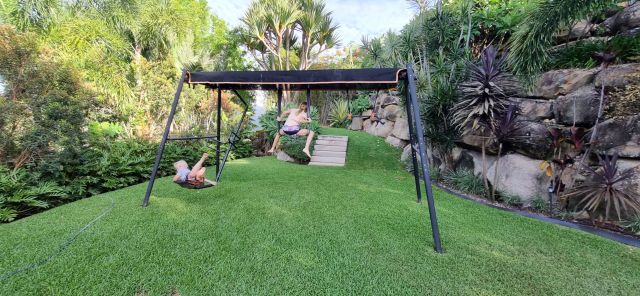How To Care For My New natural Turf
Maintaining new natural turf is crucial for ensuring its establishment and long-term health. Proper care, including regular watering, fertilisation, and mowing, helps the natural turf develop strong roots, fight off pests and diseases, and maintain a vibrant appearance. Neglecting maintenance can result in stunted growth, patchiness, and vulnerability to stressors, ultimately leading to the need for costly repairs or replacement. Therefore, consistent upkeep is essential for maximizing the benefits of new natural turf such as improved aesthetics, erosion control, and increased property value.
Here are some tips to maintain your new natural turf:
Watering
Newly installed natural turf has very important watering needs. Proper watering immediately after installation will ensure the natural turf becomes established, and it will also have an impact on how well the lawn continues to flourish for years to come. Begin watering new natural turf within a half hour after it is laid on the soil. Apply at least 2 to 3 cm (1 inch) of water so that the soil beneath the turf is very wet. Ideally the soil 7 to 10 cm (3 to 4 inches) below the surface should be moist. Below we have listed some watering tips:
- Pull back a corner of the turf and push a screwdriver or other sharp tool into the It should push in easily and have moisture along the first 7 to 10 cm (3 or 4 inches), or you need to apply more water.
- Make absolutely certain that water is getting to all areas of your new natural turf, regardless of the type of sprinkling system you use. Corners and edges are easily missed by many sprinklers (if windy) and are particularly vulnerable to drying out faster than the centre portion of your lawn. Also, areas near buildings dry out faster because of reflected heat and may require more
- Runoff may occur on some soils and sloped areas before the soil is adequately to conserve water and ensure adequate soak in, turn off the water when runoff begins, wait 30 minutes to an hour and restart the watering on the same area. Repeating this start and stop process until correct soil moisture is achieved. For the next two weeks keep the below-turf soil surface moist with daily (or more frequent) watering. Especially hot, dry or windy periods will necessitate increased watering amounts and frequency.
- As the natural turf starts to establish its new roots into the soil, it will be difficult, impossible and/or harmful to pull back a corner to check beneath the turf, but you can still use a sharp tool to check moisture depth by pushing it through the turf and into the
- Water as early in the morning as possible to take advantage of the daily start of the grass’s normal growing cycle, usually lower wind speeds and considerably less of water loss because of high temperature
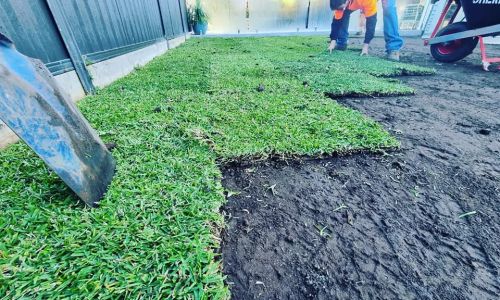
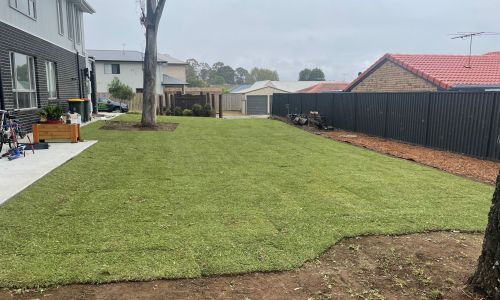
- If the temperature approaches 37°C (100 F), or high winds are constant for more than half of the day, reduce the temperature of the turf surface by lightly sprinkling the area. This sprinkling does not replace the need for longer, deeper watering, which will become even more critical during adverse weather conditions.
- Infrequent and deep watering is preferred to frequent and shallow watering because the roots will only grow as deeply as its most frequently available water Deeply rooted grass has a larger “soil-water bank” to draw moisture from and this will help the grass survive drought and hot weather that rapidly dries out the upper soil layer.
- It is recommended that you water your new natural turf lawn well after fertilising to help activate the slow release.
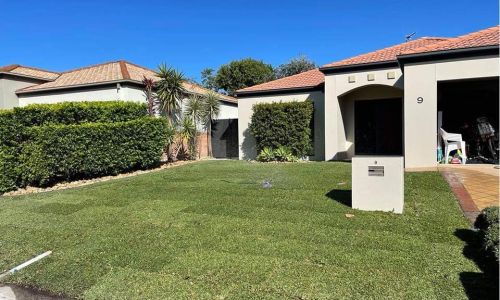
Pest Identification
Lawn grubs (such as army worm) may inhabit most lawns naturally, however large infestations have damaging results. Lawn grubs are more prevalent in the warmer months (October- April) and prefer humid weather or a combination of sunlight and afternoon thunderstorms. Indicators that you may have lawn grub include:
- Birds regularly feeding in your yard
- White cocoons appearing under the eaves of your house
- Brown moths (approx. 2cm in length)
- Wither and/or dead patches of lawn appearing
- Green droppings within the These will normally appear in small clusters with single droppings less than a millimetre in width
- Small holes or bite marks in the blades of turf
To test whether a lawn is infected with lawn grub, drench the edge of an area that looks healthy and damaged with water. If lawn grubs are present, they will crawl to the top of the grass.
For Lawn Grub, you can get a treatment from Bunnings


Mowing
When mowing new natural turf, it is important to wait until the grass reaches a height of at least 3-4 inches before cutting it for the first time. This allows the grass to establish strong roots and promotes healthy growth. Make sure to only remove about one third of the blade length each time you mow, and use sharp blades to prevent damaging the delicate young grass.


